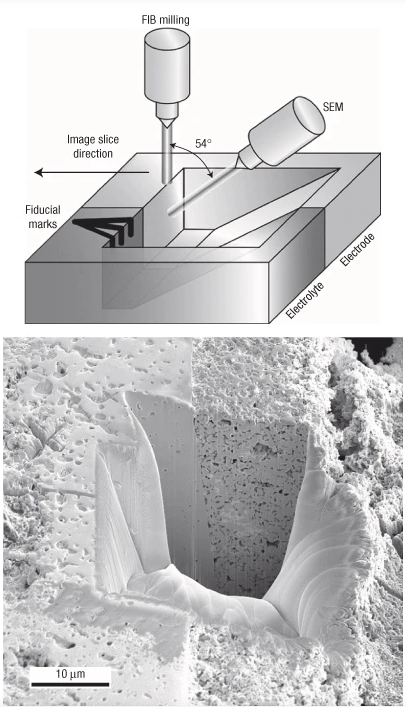Abstract
The drive towards increased energy efficiency and reduced air pollution has led to accelerated worldwide development of fuel cells. As the performance and cost
of fuel cells have improved, the materials comprising them have become increasingly sophisticated, both in composition and microstructure. In particular,
state-of-the-art fuel-cell electrodes typically have a complex micro/nano-structure involving interconnected electronically and ionically conducting phases,
gas-phase porosity, and catalytically active surfaces1. Determining this microstructure is a critical, yet usually missing, link between materials
properties/processing and electrode performance. Current methods of microstructural analysis, such as scanning electron microscopy, only provide two-dimensional
anecdotes of the microstructure, and thus limited information about how regions are interconnected in three-dimensional space. Here we demonstrate the use of
dual-beam focused ion beam–scanning electron microscopy to make a complete three-dimensional reconstruction of a solid-oxide fuel-cell electrode. We use this
data to calculate critical microstructural features such as volume fractions and surface areas of specific phases, three-phase boundary length, and the
connectivity and tortuosity of specific subphases.
Graphical Abstract
